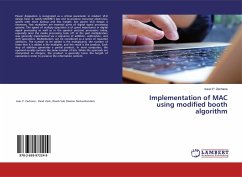The rapid development of high switching frequency power electronics devices has been significant in the past decade which leads towards wider application voltage source inverters (VSI) in AC power generation. The use of VSI involves modulation techniques that control the switches of VSI such as Sinusoidal Pulse Width Modulation (SPWM), Selective Harmonic Sinusoidal PWM and Space Vector Modulation (SVM). There is an increasing trend of using Space Vector PWM (SVPWM) because of their easier digital realization and better DC bus utilization. A two level inverter using space vector modulation strategy has been modeled and simulated with a variable RL load by using MATLAB/SIMULINK software. A microcontroller is used generate SVPWM signal needed to trigger the gates of MOSFET bridge of the inverter. The experimental result is taken by varying RL load and compare with simulation result.
Bitte wählen Sie Ihr Anliegen aus.
Rechnungen
Retourenschein anfordern
Bestellstatus
Storno








